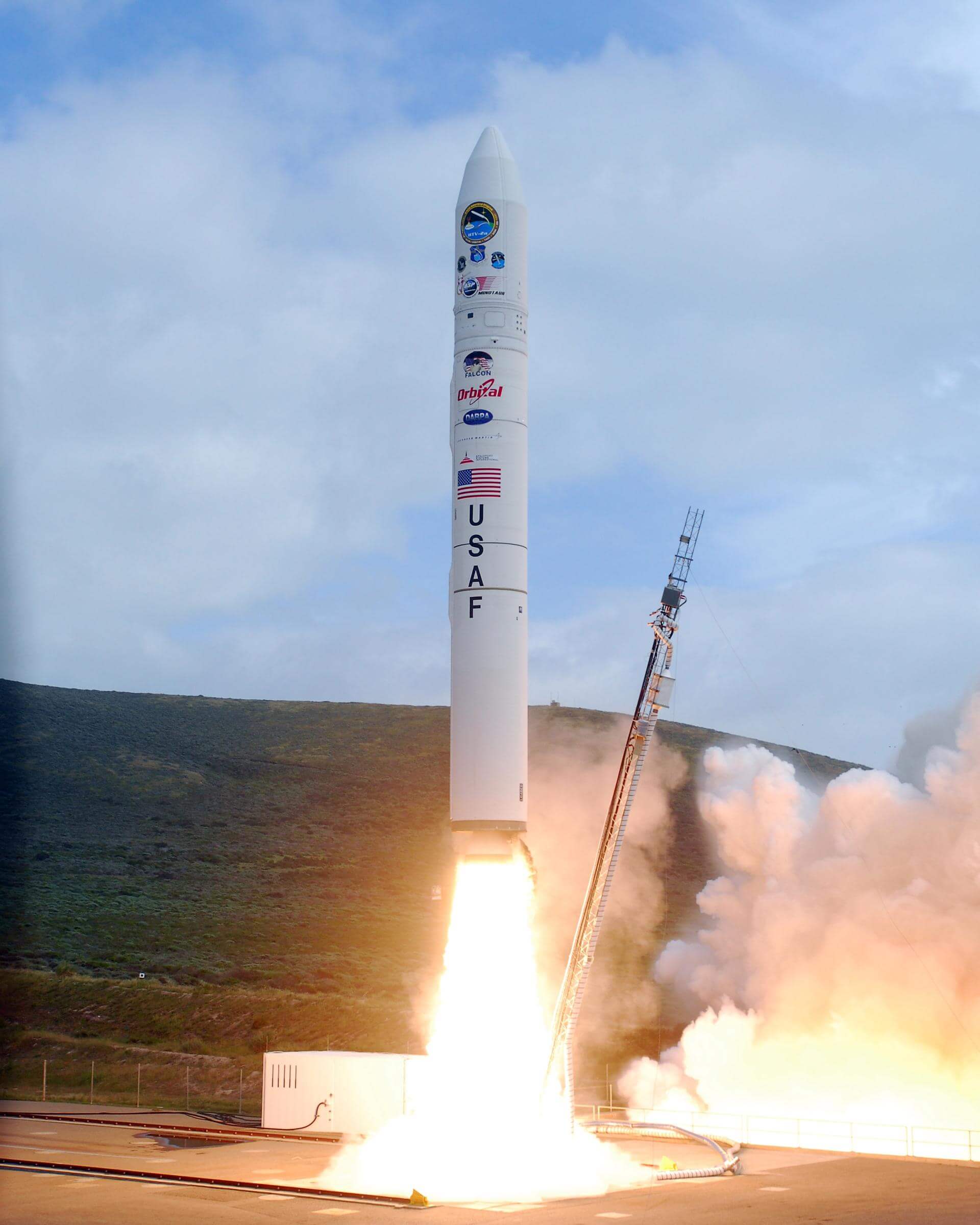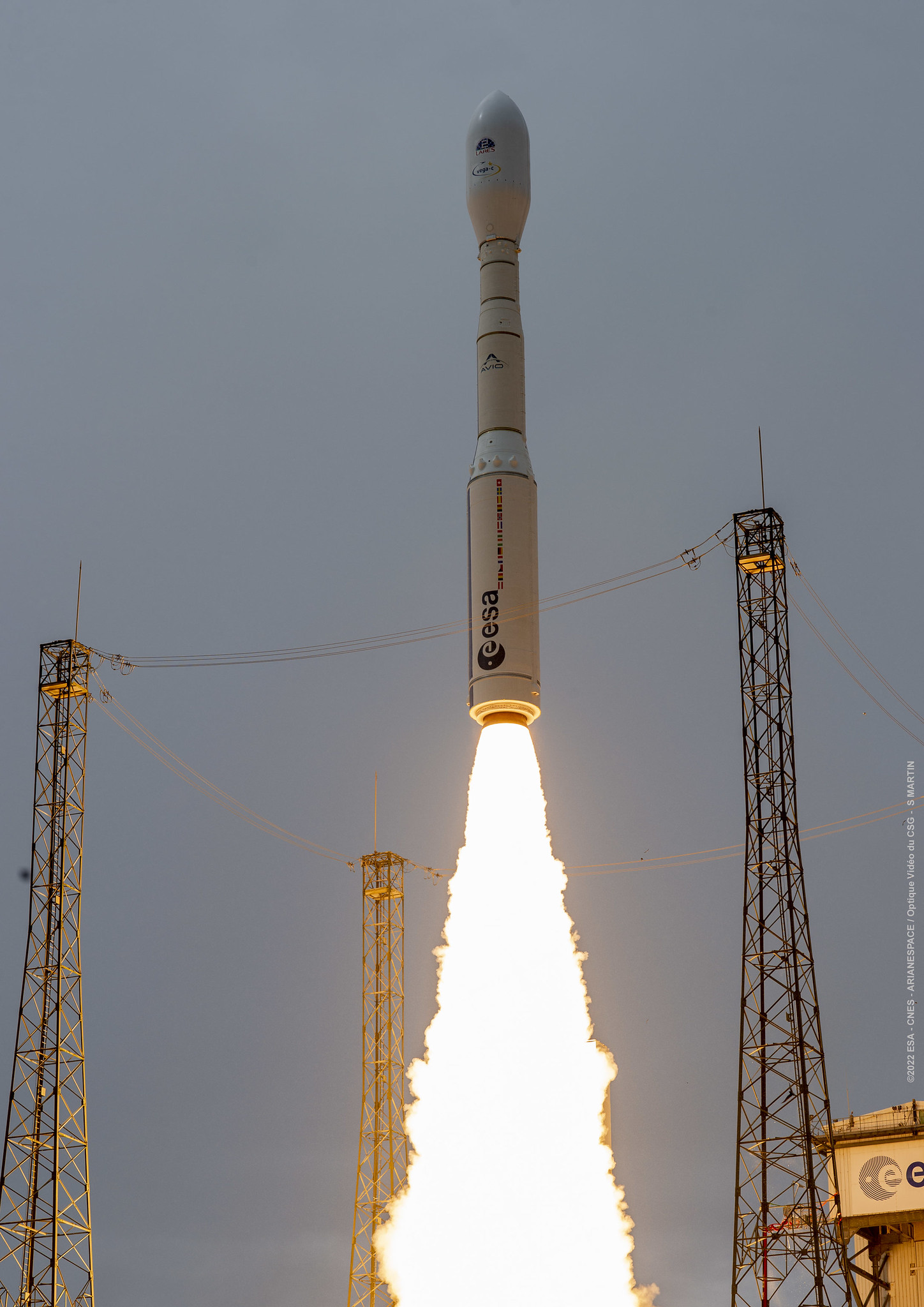· space brief · 6 min read
Space Brief 14 Jul 2025
Today's briefing covers the latest developments in satellite intelligence funding, new mandates affecting space launch and missile defense, and the early conclusion of a private astronaut mission. We also discuss Firefly Aerospace's plans to go public and stunning imagery from NASA's Parker Solar Probe.

📄Top Stories
The Pentagon is facing pressure from Congress to fund a new commercial satellite intelligence program. Senate mandates could impact future space launches and missile defense strategies. Firefly Aerospace plans a public market entry, while private astronauts return from the ISS. Lastly, NASA’s Parker Solar Probe has delivered stunning images from close proximity to the Sun.
📰Detailed Coverage
Congress Advocates for Commercial Satellite Intelligence
Congress is urging the Pentagon to reconsider its 2026 defense budget to include the Tactical Surveillance, Reconnaissance, and Tracking (TacSRT) program. This initiative aims to leverage commercial satellites for enhanced intelligence capabilities. However, its exclusion has sparked debate over the prioritization of defense spending.
The TacSRT program seeks to integrate commercial satellite data to improve situational awareness and reconnaissance. This emphasis on integrating commercial data sources aligns with recent trends to bolster national security infrastructure using existing commercial capabilities. Enhancing these systems could significantly impact satellite tracking and data analytics services offered by our web app.
Read the full story: SpaceNews
Senate Sets New Space Launch and Defense Protocols
The latest Senate defense bill includes directives for space launch and missile defense, highlighting the importance of heavy-lift launch capacity and LOX-methane safety protocols. These mandates signal a strategic push to fortify U.S. defense mechanisms in space.
By examining current launch capabilities and encouraging development in safe propellant use, the Senate aims to advance the nation’s operational standards. This move could influence future military and commercial satellite launches, offering heightened tracking and operational readiness.
Read the full story: SpaceNews
Firefly Aerospace Files for Public Offering
Firefly Aerospace, a burgeoning leader in the aerospace sector, has filed plans to go public. This move is part of a larger trend among space companies seeking capital through traditional public markets.
Going public is expected to fuel Firefly’s expansion and development of new launch vehicles and space technologies. This shift could enhance the accessibility and feasibility of satellite launches, benefiting satellite tracking enthusiasts and commercial operators alike.
Read the full story: SpaceNews
Private Ax-4 Astronauts Return to Earth
The private Ax-4 astronaut mission is set to return to Earth, undocking from the International Space Station early on July 14. The mission highlights the growing trend of private space exploration and the increasing role of commercial partners in space activities.
These missions not only open new opportunities for research and development but also underscore the expanding capabilities in tracking orbital events. Such advances are key for those invested in both commercial and scientific pursuits in space.
Read the full story: Space.com
Parker Solar Probe Captures Stunning Solar Imagery
NASA’s Parker Solar Probe has successfully completed another close pass to the Sun, capturing breathtaking images of its surface and solar phenomena. These images underscore the Probe’s crucial role in understanding solar weather and its effects on Earth’s satellite systems.
As its primary mission approaches completion, the Parker Solar Probe continues to shed light on solar dynamics. The data gathered is vital for enhancing our predictive models and improving satellite protection against solar events.
Read the full story: NASASpaceFlight.com
🛰️Satellite Spotlight
- Satellite Name: TELSTAR 14R
- NORAD ID: 37602
- Launch Date: May 20, 2011
- Mission: TELSTAR 14R is designed for communication purposes, providing reliable connectivity across various platforms.
- Orbit: GEO (Geostationary Orbit)
- Operator: TSKYBR
- Fun Fact: TELSTAR 14R, also known as Estrela do Sul 2, features 46 high-power Ku-band transponders, making it an essential asset for telecommunications in Brazil and beyond.
Track this satellite in real-time on our web app: Track TELSTAR 14R
🌌Space Weather
Current space weather shows Enhanced solar wind (536 km/s).
Current
R0 - S0 - G0
Last 24 Hour Maximums
R0 - S0 - G0
Recent Alerts
- Extended Warning: Geomagnetic K-index of 4 expected.
- Validity: Now valid until July 13, 2025.
- Potential Impacts:
- Area of impact primarily poleward of 65 degrees Geomagnetic Latitude.
- Induced currents may cause weak power grid fluctuations.
- Aurora may be visible at high latitudes, such as Canada and Alaska.
Next 24 Hours
-
Radio Blackouts Probability
- Minor: 50
- Major: 5
- Risk: None
-
Solar Radiation
- Probability: 1
- Risk: None
-
Geomagnetic Storming
- Scale: 0
- Impact: None
- Activity: Low
-
Impact Summary
- Next 24 hours: No risk of radio blackouts or solar radiation storms.
- Geomagnetic outlook: No G1 (Minor) or greater geomagnetic storms expected.
- Radiation outlook: No S1 (Minor) or greater solar radiation storms expected.
- Active region activity remains low, with a chance of R1-R2 (Minor-Moderate) radio blackouts anticipated between July 14-16 due to potential from multiple sunspots on the visible disk.
Long Term Forecast
- Forecast of Solar and Geomagnetic Activity (July 7 - August 2, 2025):
- Solar activity expected to be low from July 7-11, with several regions rotating off the disk and no major groups returning.
- From July 12, returning regions may increase activity to moderate levels through July 25, with variability thereafter.
- No proton events expected at geosynchronous orbit.
- Greater than 2 MeV electron flux is forecasted to be high from July 20-29, with moderate levels from July 7-19 and again from July 30-August 2.
- Geomagnetic activity expected at G1-G2 (Minor-Moderate) storm levels early on July 7, with generally quiet conditions returning from July 8-21, though isolated active periods may occur on July 15-16.
- Transition to negative polarity CH HSS around July 22-27 may bring unsettled to active conditions, with isolated G1 (Minor) storm periods on July 23.
- Quiet levels expected from July 28-31, followed by another negative polarity CH moving into a geoeffective position on August 1, bringing unsettled to active levels through August 2.
🚀Upcoming Space Launches
July 14
- China Aerospace Science and Technology Corporation Long March 7:
- Tianzhou-9 from Wenchang Space Launch Site, People’s Republic of China (21:30 UTC) Eighth cargo delivery mission to the Chinese space station.
July 15
- SpaceX Falcon 9 Block 5:
- Starlink Group 15-2 from Vandenberg SFB, CA, USA (02:13 UTC) A batch of satellites for the Starlink mega-constellation - SpaceX’s project for space-based Internet communication system.
- Gilmour Space Technologies Eris-1:
- Maiden Flight from Bowen Orbital Spaceport (21:30 UTC) Maiden flight of Gilmour Space’s orbital launch vehicle Eris.
July 16
- SpaceX Falcon 9 Block 5:
- Project Kuiper (KF-01) from Cape Canaveral SFS, FL, USA (06:10 UTC) First of a three-launch contract for Amazon’s Kuiper low Earth orbit satellite internet constellation.
July 17
- SpaceX Falcon 9 Block 5:
- Starlink Group 17-3 from Vandenberg SFB, CA, USA (02:08 UTC) A batch of satellites for the Starlink mega-constellation - SpaceX’s project for space-based Internet communication system.
July 21
- SpaceX Falcon 9 Block 5:
- Starlink Group 17-2 from Vandenberg SFB, CA, USA (02:09 UTC) A batch of satellites for the Starlink mega-constellation - SpaceX’s project for space-based Internet communication system.
July 25
- Russian Federal Space Agency (ROSCOSMOS) Soyuz 2.1b/Fregat-M:
- Ionosfera-M 3 & 4 from Vostochny Cosmodrome, Siberia, Russian Federation (05:54 UTC) Ionosfera is a constellation of four ionospheric and magnetospheric research satellites for Roscosmos for the project Ionozond.
July 26
- Arianespace Vega-C:
- CO3D & MicroCarb from Guiana Space Centre, French Guiana (02:03 UTC) CO3D is a constellation designed to map the globe in 3D; Microcarb is a satellite to map carbon dioxide sources and sinks globally.
July 30
- Indian Space Research Organization GSLV Mk II:
- NISAR (NASA-ISRO Synthetic Aperture Radar) from Satish Dhawan Space Centre, India (11:30 UTC) NISAR will map the elevation of Earth’s land and ice masses 4 to 6 times a month to observe natural processes and hazards.
July 31
- SpaceX Falcon 9 Block 5:
- Bandwagon 4 (Dedicated Mid-Inclination Rideshare) from Cape Canaveral SFS, FL, USA (00:00 UTC) Dedicated rideshare flight with dozens of small microsatellites and nanosatellites for commercial and government customers.
Note: Launch dates and times are subject to change due to technical or weather considerations.

Maurice Stellarski




